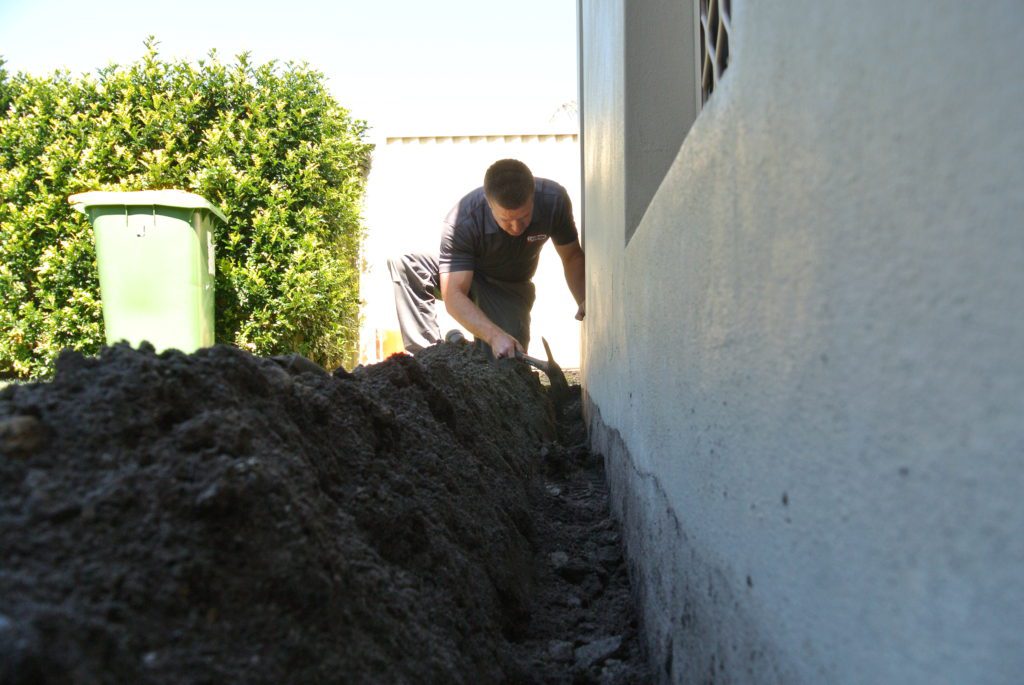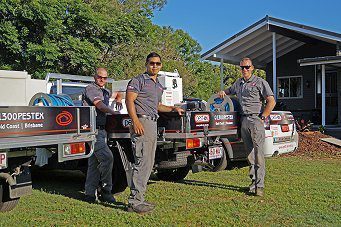
Australian operated

Australian operated
Free on-site visit & quote
Over 14,000+ homes protected
5/5 stars is most frequent rating
Termites are a silent menace—they often go undetected until significant damage has already been done. That’s why understanding the termite treatment cost is essential for any Australian property owner. Whether you’re dealing with an active infestation or looking to prevent one, knowing the options available, their effectiveness, and the factors influencing pricing can help you make informed decisions about overall termite control cost.
This guide breaks down everything from different treatment types to cost factors, signs of termite activity, and when to seek professional help if you’re wondering whether a quote is reasonable or the best solution for your home, you’re in the right place.
![]()
Termites are experts at hiding, but there are subtle signs that may indicate their presence before severe damage occurs. One of the most common indicators is hollow-sounding timber—if you tap on empty wooden structures, termites may have eaten the wood from the inside out. You might also notice mud tubes along walls, foundations, or plumbing lines; termites use these to travel and stay protected from light and air.
Other warning signs include discarded wings near windows or doors, bubbling or blistering paint, and tiny mounds of termite droppings (frass) that resemble sawdust. If you notice any of these, it’s essential to act quickly. Early detection and prompt professional treatment can save you thousands in repairs and prevent further infestation.
It’s extremely important to select the right type of Termite Treatment for your home, because choosing wisely affects future termite treatment cost. The age or construction type of your home will determine what treatment is best suited for you. If you’re looking for how to get rid of termites effectively, understanding your treatment options is the first step.
Here we will explain the 2 most common types of Termite Treatments used to Control Termites:
A Termite Barrier is a continuous liquid-treated zone installed in the soil around the perimeter of your home. Termites must then travel through the treated zone before entering the house. We use Termidor in all Termite Barriers. Termidor is undetectable to Termites, so Termites will pick up a lethal dose of Termidor if they pass through it. It will start to affect the Termites within 8-21 days, allowing the product to spread back to the nest and affect the other Termites. Termites and the colony will be treated before they can access your home.

Termite barriers offer up to 8 years of protection by forming a continuous treated zone around your home. This involves trenching and drilling through paths and slabs to apply the treatment—an approach we frequently use in Brisbane due to high termite activity.
While the upfront cost is higher than bait systems, barriers provide a long-term solution with minimal maintenance. We use premium products like Termidor, which are undetectable to termites and allow the treatment to spread back to the colony.
Termite barriers are a preferred option for homes in termite-prone areas like Queensland. When installed correctly and combined with routine inspections, they deliver peace of mind and a strong line of defence.
Termite Bait Systems are designed to treat Termites before they enter your home.
These baits are placed around your home, usually every 3 meters. They are usually serviced monthly. The active termites are then fed a Termite Bait that contains an insect growth regulator. The product is fed to the termites and spread back to the nest and colony, allowing the Termite nest to be treated before it can attack the house.
Termite bait systems provide a strategic and eco-friendly solution by placing discreet stations around the home to target and eliminate termite colonies. They’re ideal for properties where full chemical barriers aren’t practical due to design or access.
These systems typically cost less upfront but require ongoing monitoring and maintenance. Technicians regularly check and replenish the bait to ensure effectiveness. Although it involves a recurring cost, the system offers a reliable and less invasive option for long-term termite control.
This should way up the pros, cons and costs of Termite treatments, if you have any questions or you think you may have been quoted to much? We are happy to help, we provide free on site quotes and risk assessments.
Several variables can impact the overall cost of termite treatment. Here’s what typically affects the pricing:
Type of Treatment:Costs vary depending on the chosen method. Termite bait systems typically involve ongoing servicing fees, while chemical barriers have a higher upfront cost but offer long-term protection. In extreme cases, fumigation may be required, which can be more expensive.
Level of Termite Infestation: The more advanced the termite activity, the more comprehensive and labour-intensive the treatment, often resulting in higher costs due to multiple visits or additional materials.
Property Size:Larger homes or commercial properties generally require more product and time to treat effectively, increasing labour and material costs.
Location of the Property:Your geographical location can influence pricing. For example, homes in high-risk termite zones or remote areas may incur higher service fees. Depending on local demand and travel requirements, prices can also vary between pest control providers.
Preventing termites starts with making your property less attractive to them. Eliminating moisture and reducing wood-to-soil contact can lower your eventual termite treatment cost. In high-risk areas like Queensland, it’s especially important to follow proper prevention strategies year-round to avoid costly termite damage. The QBCC also offers detailed termite prevention advice to help Queensland property owners safeguard their homes. One of the most effective ways to deter an infestation is by eliminating moisture and reducing wood-to-soil contact around your home. Ensure that leaking taps, gutters, and downpipes are repaired promptly, as termites thrive in damp environments. Keep garden beds, mulch, and timber sleepers at least a few centimetres away from the building’s foundation.
Routine termite inspections are one of the most powerful prevention tools available. A licensed technician can identify early signs of termite activity, assess potential risk areas, and recommend tailored strategies to protect your home. Even if no activity is present, annual inspections are recommended, especially in high-risk zones like Queensland and coastal regions. Early detection helps avoid costly repairs and gives you peace of mind that your property remains termite-free.
Handling termites alone might seem cheaper, especially with many products available at hardware stores. DIY methods like sprays or baits can sometimes help with minor issues, but they usually don’t reach the main colony—and that’s where the real problem lies. If the nest isn’t destroyed, the termites will just return.
On the other hand, professional termite control services use expert knowledge and high-grade products that aren’t available to the public. Trained technicians know how to find hidden termite activity and use the proper treatment for your home. While it might cost more upfront, professional treatments are often more effective and come with warranties, giving you peace of mind that your home is adequately protected.
Call us for a free on-site Quotation.
Things to consider before you have Termites Treated –
We are accredited to install all types of Termite Treatment and Control products, Using a company like us will ensure you get honest up front advice on the right Termite Treatment for your home as we don’t favor one over another.

Cheap termite treatment might save you a few dollars initially, but is it really worth the risk? Termites can cause an incredible amount of structural damage to your home, which insurance won’t cover. It pays to factor in the real termite control cost and do the job right from the start.
Give us a Call Today or Book Online.
Our focus serviced areas include Brisbane, Gold Coast, Tweed Heads & Logan.







